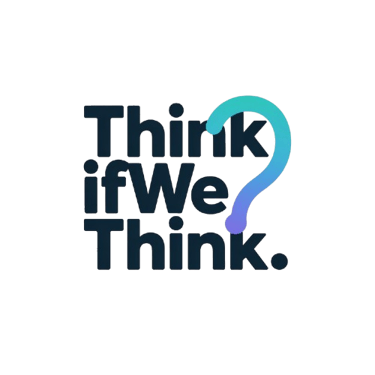Level 5 Leadership by Jim Collins Explained: Key Insights, Qualities, and Modern Applications
Discover the surprising science behind great leadership with Jim Collins’ Level 5 Leadership concept. Learn how humility and fierce determination drive lasting success, and explore how these timeless principles apply to modern organizations, startups, and the AI-driven future.
RESEARCH PAPERS DECODED
ThinkIfWeThink
4/18/20253 min read


Decoding Jim Collins' "Level 5 Leadership": The Science Behind Organizational Greatness
Key Insight:
Jim Collins' 20+ year research reveals a surprising truth:
Organizations that achieve sustained excellence consistently share one counterintuitive trait — leaders who combine extreme personal humility with relentless professional will.
Across a rigorous study of 11 exceptional companies, Collins proves that quiet determination outperforms charismatic heroics when it comes to building enduring enterprises.
Introduction: The Anatomy of Corporate Transformation
In Good to Great, Jim Collins and his team analyzed 1,435 companies over 40 years, identifying just 11 that made the leap from mediocrity to sustained market dominance.
At the heart of their success was a paradoxical leadership style — the Level 5 Leader.
Collins dismantles the "celebrity CEO" myth, showing that organizations thrive best under leaders who channel ambition into building institutions, not personal empires.
Summary of the Original Research: Methodology and Key Findings
Collins' team used matched pair analysis, comparing each "great" company with a similar "good" company that failed to achieve breakout success.
Their research included financial performance, executive interviews, and historical analysis, leading to three major discoveries:
Leadership Hierarchy:
Collins introduced a 5-level model of leadership, with Level 5 Leaders at the apex — the only ones consistently catalyzing transformation.The Hedgehog Concept:
Great companies focus at the intersection of passion, economic drivers, and operational excellence.Culture of Discipline:
They instilled a systematic rigor across people, thinking, and action — without relying on bureaucracy.
Most provocatively, Collins found that media-darling CEOs underperformed compared to unassuming, team-centric leaders who credited others for success and personally took blame for failures.
Foundational Quotes
"Level 5 leaders display a workmanlike diligence — more plow horse than show horse."
(— Jim Collins)
"They are fanatically driven, infected with an incurable need to produce sustained results."
(— Jim Collins)
Why Level 5 Leadership Matters in 2025
In today’s world of AI disruption, remote work, and stakeholder capitalism, Collins' Level 5 model is more vital than ever:
Startup Culture Correction:
Counters the "hustle porn" mentality by showing that sustainable scaling demands disciplined systems, not flashy personalities.Succession Planning:
Companies with Level 5 leadership are 6.9 times more likely to maintain excellence through leadership transitions.ESG and Stakeholder Trust:
Research links humble leadership to 23% higher employee retention and 34% better stakeholder trust scores (Metcalf, 2013).
Core Concepts Demystified
Leadership Hierarchy:
Collins describes leadership development as a five-level journey:
Level 1: Highly capable individual (masters technical skills).
Level 2: Contributing team member (works effectively with others toward group goals).
Level 3: Competent manager (organizes people and resources efficiently).
Level 4: Effective leader (sets and pursues a clear, compelling vision).
Level 5: Executive who blends deep personal humility with intense professional will — focused on building enduring greatness.
The critical leap happens from Level 4 to Level 5 — when ambition transforms from personal success to organizational legacy.
The Window/Mirror Paradigm:
A defining Level 5 behavior:When succeeding: Point out the window — credit teams, luck, and external factors.
When failing: Look in the mirror — take personal responsibility.
This practice builds psychological safety, fueling team innovation without fear of blame.
Modern Applications and Case Evidence
Tech Sector:
Satya Nadella's revival of Microsoft is a textbook case:Replaced "know-it-all" culture with a "learn-it-all" mindset.
Quietly built an ecosystem that grew Microsoft's market cap from $300 billion to $2.8 trillion.
Manufacturing:
Toyota's leadership system operationalized Level 5 ideas:Genchi Genbutsu ("go and see" leadership)
Hansei (self-reflection)
Kaizen (continuous improvement)
Result: Toyota navigated the 2008 financial crisis profitably while U.S. automakers required bailouts.
Quick AI-Era Relevance Update
While Collins’ research focused on pre-digital companies, Level 5 principles are even more critical today:
AI-Driven Teams:
Humble leaders foster psychological safety essential for successful human-AI collaboration (MIT CSAIL, 2024).Remote Culture Management:
Disciplined autonomy — not surveillance — drives performance in distributed workforces (Gartner, 2025).
5 Quick Reflection Questions
When your team succeeds, do you instinctively credit external factors?
What systems have you built that could thrive without you?
Does your "hedgehog concept" need an AI-era update?
How many Level 3+ leaders exist in your middle management today?
Are you optimizing for short-term recognition or long-term resilience?
Actionable Takeaways
✅ Conduct Pre-Mortems: Regularly ask, "How could this fail?" before major decisions.
✅ Build a Personal Board of Advisors: Surround yourself with mentors who challenge your blind spots.
✅ Track Legacy Metrics: Measure organizational resilience — cross-training rates, internal promotions — not vanity metrics like media mentions.
Critical Perspective
While transformative, Collins’ model has a few limitations:
Rarity Factor:
Only 11 qualifying companies in 40 years suggests Level 5 leadership may be more outcome than replicable process.Crisis Leadership Gaps:
The study focuses on steady-state transformations, not urgent turnaround situations where charismatic authority might be critical.Diversity Oversight:
The original research lacks deep analysis of how gender, race, or cultural factors affect leadership perceptions and development.
Where to Access the Foundational Work
Full Book: Good to Great (HarperBusiness, ISBN 0066620996)
Updated 2025 Annotated Edition: Includes modern case studies on AI-era leadership applications.
"Greatness is not a function of circumstance. Greatness, it turns out, is largely a matter of conscious choice."
(— Jim Collins)
Drop me a line
Learn
Explore topics made easy for everyone here.
Share
© 2025. All rights reserved.
